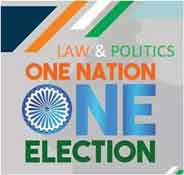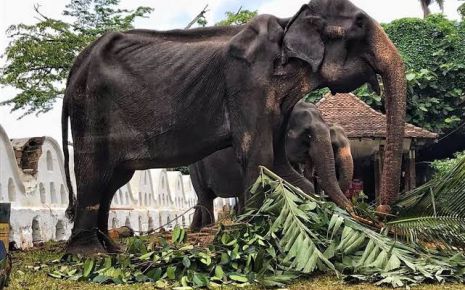The Impact Of Globalization On Women's Rights
What are the impacts of globalisation on the socioeconomic and political
rights and status of women in India?
It has paved the way for them to achieve a good education, and this in turn gives women better accessibility to jobs. With so many changes coming into being, the stereotypical attitude that others have towards women is also beginning to change and women are being treated at par with men in most of the households and workplaces though a few exceptions do exist.
This change in mentality and behaviour has got a lot to do with women's movements that are happening throughout the globe and this provide disclosure to women globally by educating them about their rights and spreading awareness as well.
When it comes to women, globalization also has a negative impact on their lives. Women do most of the work and receive a nominal salary for the work done. This is the harsh reality of "women- workers" in India. Apart from these, they also sometimes face sexual harassment at the workplace and are insulted badly.
Women are exposed to harsh, unhealthy working conditions which causes a lot of problems both mentally as well as physically. This is how women are being exploited, and this can be seen not only in rural areas or small businesses but also in big companies and sectors where they are expected to work on a 10 to 12 hour basis.
This totally goes against the labour laws, but is ignored by everybody. Even though a lot has changed with the influence of western thought on our culture and values, women are still considered to be weak and are looked down upon. We can see this kind of discrimination against them in workplaces as well.
Firstly, we need to understand globalisation is a process of increasing economic and social interconnection and integration to the point that an incident in one area of the world impacts individuals in other parts of the world. The globalization in various "socio-cultural organisations" has acted as an agent of merging local society and fostering the development of a global society.
However, the global plan of action for privatisation, liberalisation, and globalisation has created obstacles for individuals living in developing nations, particularly those previously aided by state welfare.Therefore, in this context, in India, the socioeconomic and political impact of privatisation, liberalisation, and globalisation on the position and rights of women has been a source of major concern for policymakers and social scientists.
The "United Nations Organization" (UNO) and its "Division for the Advancement of Women" established a new framework for the growth and empowerment of women on a global scale (DAW). In 1946, the "United Nations Economic and Social Council" (ECOSOC) formed the "Commission on the Status of Women" (CSW).
The advancement of women's positions and gender neutrality are the only goals of CSW. It meets yearly to review progress toward gender equality and is the principal organization in the globe that makes policy. In order to achieve gender equality and the upliftment of women around the world, it analyzes obstacles, sets standards, and develops practical policies. CSW draughts reports and recommendations to draw the urgent attention of governments worldwide to the development of women's rights in all spheres of economical, political, and educational activity, and presents them to ECOSOC.
To the credit of the United Nations, the "Convention on the Political Rights of Women" (1954), the "Convention on the Elimination of All Forms of Discrimination Against Women" (1979), the "International Research and Training Institute for the Advancement of Women" (INSTRAW) (1976), the "Office of the Special Advisor on Gender Issues and the Advancement of Women" (OSAGI) (1997) are all worth mentioning.
Significant societal issues including gender equity, domestic abuse, and children's rights are no longer seen as personal choices. In order to counter the growing risk of violence against women and children on a national and international level, socioeconomic and political measures have also been put in place. The global battle for the rights of women, children, and other marginalised groups of society has been a source of concern for modern political philosophy.
The advancement of information technology, which united feminist groups worldwide, has been hailed as a fresh hope for the advancement of women's socioeconomic and political rights worldwide. Not only did the late 1980s and early 1990s see the birth of global women movements, but they also saw a global perception among women organisations about the socioeconomic and political development of women worldwide.
The growth of industries and commerce in globalizing countries is also seen as beneficial for the employment of women because it allows for the recruitment of women as skilled workers. The advancement of women's abilities and education is considered as a benefit of the free movement of the information. They open up new opportunities of knowledge for women that were previously unavailable. Their increased knowledge enables them to develop socially, economically, and politically. Women now share their work experiences with one another, and democratic and global governance aid in the development and implementation of policies that benefit women on a local and global level.
But globalization also exacerbates women's exploitation, as privatisation and liberalisation are entirely motivated by profit maximisation. Employment opportunities are created as a result of industrial and commercial development guided by the logic of maximising profit and minimising labour costs, but new opportunities and employment for women are created only if women establish themselves as more affordable labour in comparison to male labour.
The other remark is that employment of women will be a double burden, since social conservatism and patriarchal divisions of labour would compel women in emerging cultures to perform housework in addition to their occupations. As a result, the global movement of cash, technology, and information is perceived to be a double-edged sword.
Global investment, technology, and open access to information have helped wealthy, educated, and skilled women increase their abilities and income, but on the other hand, they have economically marginalized unskilled women because the vast majority of them lack the technical skills required to work in the current industry.
Because of privatisation and the state's retreat from social policies in emerging nations, the number of unpaid women workers has grown. Workers are compelled to work longer hours and in inhumane circumstances because private contractors and owners of private enterprises do not observe labour rules. It is important to note that women make up the great majority of employees in the unorganised sector of the economy.
Because the unemployment rate in developing nations is far higher than in developed countries, "the hire-and-fire policy" utilised by industries in liberalised and privatised economies has also compelled the labour to work as per demands of the management.
Various women organisations raised the issue of women's socioeconomic and political rights during the freedom struggle. However, the colonial judiciary did not take a secular approach in deciding the issue of women's property rights, instead referring to religious texts and other ancient customs that undermined women's rights. India began its journey as a free nation with fake promises of socioeconomic and political justice for India's weaker and backward sections through a state-sponsored mixed economy and social sector. The constitutional measures for social democracy and political fairness have been supported by the Indian government's periodic constitutional revisions and legal and legislative actions.
Women's empowerment and development have always been a priority for the Indian state's policy framework and legal measures. In every aspect of life, "the Indian Constitution gives women the right to equality: equality before the law (Article 14), no discrimination by the state under Article 15(1), equality of opportunity under Article 16, and equal compensation for equal labour under Article 39 (d).
Additionally, it authorises the State to make special provisions in favour of women and children under Article 15(3), denounces practices that are derogatory to women's dignity under Article 51(A) (e), and authorises the State to make provisions for women's just and humane working conditions and maternity leave under Article 51(A) (e) and Article 42.
To assure women's safety and advancement, the Indian Parliament adopted additional legislation in addition to constitutional protections like for example The Indecent Representation of Women (Prohibition) Act, 1986, National Commission for Women Act, 1990, Protection of Women from Domestic Violence Act, 2005, The Sexual Harassment of Women at Workplace Act, 2013, etc."
Globalisation has given Indian women a new platform on which to identify themselves as qualified professionals. They are on a level with their international counterparts. While easy access to knowledge and information, as well as professional education, has expanded possibilities and earnings, the economic benefits of globalisation are confined to a few educated metropolitan and urban women.
The great majority of rural and illiterate women remain unaffected by globalisation's good effects; in fact, they have lost out on the advantages of a mixed and welfare economy that they should have received as a result of the Indian government's acceptance of New Economic Policy.
Additionally, the use of capital-intensive agricultural practices has resulted in widespread unemployment of women in rural and semi urban regions.
Women's high rate of unemployment and under employment suggests that their share of the population living below the poverty line is greater than that of males. Rural women are engaged as unskilled labourers. Workers in the unorganized sector face several exploitations. Not only is exploitation based on class, but also on male dominance over females. Numerous studies have found that sexual harassment of women is prevalent in the unorganized sector, although women often remain silent due to fear of losing their jobs and societal pressures.
The influence of global technology, global health facilities, global media, and worldwide education on women's rights is also relatively recent in Indian society's social structure. The global media and the exposure of Indian society to western culture in general and to women in particular were supposed to result in the dismantling of the old patriarchal structure and male rule. The facts and research on women's education, employment, and family income, on the other hand, strongly show the opposite.
The increase in female education has not resulted in an increase in female employment, and the increase in family income has resulted in the loss of female employment owing to social conservatism and the habit of women performing household chores in India. Additionally, the advancement of women and girls' education faces significant obstacles as a result of the female child's higher primary school dropout rate.
Even the early boost in women's employment involvement following globalisation has dwindled within a decade. The government's efforts to develop women's abilities via education have likewise failed miserably, since women's employment involvement has decreased along with the rise of female education in India.
Women's employment circumstances and status in India's unorganized sector also reflect a negative picture. Efforts and claims by the government to increase women's employment participation are proving conflicting. The defeminization of the labour market and the use of capital-intensive techniques have compelled unskilled women workers to abandon conventional jobs and enter domestic employment and menial jobs.
There are, without a doubt, laws protecting women and preventing their exploitation both within and outside the house, but these laws have not been effectively enforced. Due to the vast size of the nation and its population, the dispersed nature of women employees, a lack of education and legal illiteracy, women have become vulnerable.
Global feminism's growth, the Beijing Platform for Action, the Millennium Development Goals, and the World Bank and other foreign institutions' attempts to improve women's empowerment have all been seen positively for women's empowerment in India. Numerous initiatives and declarations have been established by the UN since the Beijing Platform of Action, and national political parties have been urged to increase women's political engagement. Regardless of global and national initiatives, several women's groups continue to work at the grassroots level to educate women about their rights and the critical nature of political involvement.
Conclusion
A new movement should be sparked by beginning an education campaign among young, educating them about current societal ills and the ways for eradicating them. Given that it has now reached every region of the nation, the media's coverage can be quite helpful in this situation.
NGOs can help by educating both the male and female populations of India about gender sensitization. Through self-help groups run by qualified women professionals, women can learn new professions and collaborate. Additionally, they can receive coaching from experts on how to handle the sales and marketing facets of their line of work.
In order to increase people's understanding of health and education issues as well as their rights with regard to education and training, trade unions and non-governmental organizations can play a crucial role.
Specific sectors should be established to absorb the increased share of female labour and to produce high-quality jobs. Simultaneously, law enforcement officials should be adequately equipped to respond to cases involving women and children.
Excessive punishment should be given to perpetrators, and a zero-tolerance policy for sexual offenders should be implemented. Radical revisions to the outdated police and security systems are possible through the use of cutting-edge crime investigative tactics and surveillance measures such as installing cameras in public areas, providing adequate lighting in public spaces, and easy access to the police via a public information system.
Therefore, if the above-mentioned suggestions can be strategically implemented at a practical level, it would greatly secure and promote women rights and welfare in our country.
References:
Women And Globalisation
The Target Group in every society is always women. Women have always faced "patriarchal and social problems", "caste-based discrimination" or "social restraints. Many times it is so, because of financial constraints and lack of support from the family. With changing times we see that women have shifted from their typical role of managing households and have engaged themselves in other activities.It has paved the way for them to achieve a good education, and this in turn gives women better accessibility to jobs. With so many changes coming into being, the stereotypical attitude that others have towards women is also beginning to change and women are being treated at par with men in most of the households and workplaces though a few exceptions do exist.
This change in mentality and behaviour has got a lot to do with women's movements that are happening throughout the globe and this provide disclosure to women globally by educating them about their rights and spreading awareness as well.
When it comes to women, globalization also has a negative impact on their lives. Women do most of the work and receive a nominal salary for the work done. This is the harsh reality of "women- workers" in India. Apart from these, they also sometimes face sexual harassment at the workplace and are insulted badly.
Women are exposed to harsh, unhealthy working conditions which causes a lot of problems both mentally as well as physically. This is how women are being exploited, and this can be seen not only in rural areas or small businesses but also in big companies and sectors where they are expected to work on a 10 to 12 hour basis.
This totally goes against the labour laws, but is ignored by everybody. Even though a lot has changed with the influence of western thought on our culture and values, women are still considered to be weak and are looked down upon. We can see this kind of discrimination against them in workplaces as well.
Firstly, we need to understand globalisation is a process of increasing economic and social interconnection and integration to the point that an incident in one area of the world impacts individuals in other parts of the world. The globalization in various "socio-cultural organisations" has acted as an agent of merging local society and fostering the development of a global society.
However, the global plan of action for privatisation, liberalisation, and globalisation has created obstacles for individuals living in developing nations, particularly those previously aided by state welfare.Therefore, in this context, in India, the socioeconomic and political impact of privatisation, liberalisation, and globalisation on the position and rights of women has been a source of major concern for policymakers and social scientists.
The "United Nations Organization" (UNO) and its "Division for the Advancement of Women" established a new framework for the growth and empowerment of women on a global scale (DAW). In 1946, the "United Nations Economic and Social Council" (ECOSOC) formed the "Commission on the Status of Women" (CSW).
The advancement of women's positions and gender neutrality are the only goals of CSW. It meets yearly to review progress toward gender equality and is the principal organization in the globe that makes policy. In order to achieve gender equality and the upliftment of women around the world, it analyzes obstacles, sets standards, and develops practical policies. CSW draughts reports and recommendations to draw the urgent attention of governments worldwide to the development of women's rights in all spheres of economical, political, and educational activity, and presents them to ECOSOC.
To the credit of the United Nations, the "Convention on the Political Rights of Women" (1954), the "Convention on the Elimination of All Forms of Discrimination Against Women" (1979), the "International Research and Training Institute for the Advancement of Women" (INSTRAW) (1976), the "Office of the Special Advisor on Gender Issues and the Advancement of Women" (OSAGI) (1997) are all worth mentioning.
Significant societal issues including gender equity, domestic abuse, and children's rights are no longer seen as personal choices. In order to counter the growing risk of violence against women and children on a national and international level, socioeconomic and political measures have also been put in place. The global battle for the rights of women, children, and other marginalised groups of society has been a source of concern for modern political philosophy.
The advancement of information technology, which united feminist groups worldwide, has been hailed as a fresh hope for the advancement of women's socioeconomic and political rights worldwide. Not only did the late 1980s and early 1990s see the birth of global women movements, but they also saw a global perception among women organisations about the socioeconomic and political development of women worldwide.
The growth of industries and commerce in globalizing countries is also seen as beneficial for the employment of women because it allows for the recruitment of women as skilled workers. The advancement of women's abilities and education is considered as a benefit of the free movement of the information. They open up new opportunities of knowledge for women that were previously unavailable. Their increased knowledge enables them to develop socially, economically, and politically. Women now share their work experiences with one another, and democratic and global governance aid in the development and implementation of policies that benefit women on a local and global level.
But globalization also exacerbates women's exploitation, as privatisation and liberalisation are entirely motivated by profit maximisation. Employment opportunities are created as a result of industrial and commercial development guided by the logic of maximising profit and minimising labour costs, but new opportunities and employment for women are created only if women establish themselves as more affordable labour in comparison to male labour.
The other remark is that employment of women will be a double burden, since social conservatism and patriarchal divisions of labour would compel women in emerging cultures to perform housework in addition to their occupations. As a result, the global movement of cash, technology, and information is perceived to be a double-edged sword.
Global investment, technology, and open access to information have helped wealthy, educated, and skilled women increase their abilities and income, but on the other hand, they have economically marginalized unskilled women because the vast majority of them lack the technical skills required to work in the current industry.
Because of privatisation and the state's retreat from social policies in emerging nations, the number of unpaid women workers has grown. Workers are compelled to work longer hours and in inhumane circumstances because private contractors and owners of private enterprises do not observe labour rules. It is important to note that women make up the great majority of employees in the unorganised sector of the economy.
Because the unemployment rate in developing nations is far higher than in developed countries, "the hire-and-fire policy" utilised by industries in liberalised and privatised economies has also compelled the labour to work as per demands of the management.
Women And Globalization In India
Women movements in India have historically been associated with western education and a concerted struggle for women's socioeconomic and political rights. Although the Indian intellectuals and social reformists launched societal awareness against bad practices such as sati, child marriage, and devdasis, reformists could only succeed with the help of the colonial bureaucracy. However, political and economic problems such as the right to vote, political involvement, and property rights were championed exclusively by Indian women educated in the west during the independence fight.Various women organisations raised the issue of women's socioeconomic and political rights during the freedom struggle. However, the colonial judiciary did not take a secular approach in deciding the issue of women's property rights, instead referring to religious texts and other ancient customs that undermined women's rights. India began its journey as a free nation with fake promises of socioeconomic and political justice for India's weaker and backward sections through a state-sponsored mixed economy and social sector. The constitutional measures for social democracy and political fairness have been supported by the Indian government's periodic constitutional revisions and legal and legislative actions.
Women's empowerment and development have always been a priority for the Indian state's policy framework and legal measures. In every aspect of life, "the Indian Constitution gives women the right to equality: equality before the law (Article 14), no discrimination by the state under Article 15(1), equality of opportunity under Article 16, and equal compensation for equal labour under Article 39 (d).
Additionally, it authorises the State to make special provisions in favour of women and children under Article 15(3), denounces practices that are derogatory to women's dignity under Article 51(A) (e), and authorises the State to make provisions for women's just and humane working conditions and maternity leave under Article 51(A) (e) and Article 42.
To assure women's safety and advancement, the Indian Parliament adopted additional legislation in addition to constitutional protections like for example The Indecent Representation of Women (Prohibition) Act, 1986, National Commission for Women Act, 1990, Protection of Women from Domestic Violence Act, 2005, The Sexual Harassment of Women at Workplace Act, 2013, etc."
Globalisation has given Indian women a new platform on which to identify themselves as qualified professionals. They are on a level with their international counterparts. While easy access to knowledge and information, as well as professional education, has expanded possibilities and earnings, the economic benefits of globalisation are confined to a few educated metropolitan and urban women.
The great majority of rural and illiterate women remain unaffected by globalisation's good effects; in fact, they have lost out on the advantages of a mixed and welfare economy that they should have received as a result of the Indian government's acceptance of New Economic Policy.
Additionally, the use of capital-intensive agricultural practices has resulted in widespread unemployment of women in rural and semi urban regions.
Women's high rate of unemployment and under employment suggests that their share of the population living below the poverty line is greater than that of males. Rural women are engaged as unskilled labourers. Workers in the unorganized sector face several exploitations. Not only is exploitation based on class, but also on male dominance over females. Numerous studies have found that sexual harassment of women is prevalent in the unorganized sector, although women often remain silent due to fear of losing their jobs and societal pressures.
The influence of global technology, global health facilities, global media, and worldwide education on women's rights is also relatively recent in Indian society's social structure. The global media and the exposure of Indian society to western culture in general and to women in particular were supposed to result in the dismantling of the old patriarchal structure and male rule. The facts and research on women's education, employment, and family income, on the other hand, strongly show the opposite.
The increase in female education has not resulted in an increase in female employment, and the increase in family income has resulted in the loss of female employment owing to social conservatism and the habit of women performing household chores in India. Additionally, the advancement of women and girls' education faces significant obstacles as a result of the female child's higher primary school dropout rate.
Even the early boost in women's employment involvement following globalisation has dwindled within a decade. The government's efforts to develop women's abilities via education have likewise failed miserably, since women's employment involvement has decreased along with the rise of female education in India.
Women's employment circumstances and status in India's unorganized sector also reflect a negative picture. Efforts and claims by the government to increase women's employment participation are proving conflicting. The defeminization of the labour market and the use of capital-intensive techniques have compelled unskilled women workers to abandon conventional jobs and enter domestic employment and menial jobs.
There are, without a doubt, laws protecting women and preventing their exploitation both within and outside the house, but these laws have not been effectively enforced. Due to the vast size of the nation and its population, the dispersed nature of women employees, a lack of education and legal illiteracy, women have become vulnerable.
Global feminism's growth, the Beijing Platform for Action, the Millennium Development Goals, and the World Bank and other foreign institutions' attempts to improve women's empowerment have all been seen positively for women's empowerment in India. Numerous initiatives and declarations have been established by the UN since the Beijing Platform of Action, and national political parties have been urged to increase women's political engagement. Regardless of global and national initiatives, several women's groups continue to work at the grassroots level to educate women about their rights and the critical nature of political involvement.
Conclusion
A new movement should be sparked by beginning an education campaign among young, educating them about current societal ills and the ways for eradicating them. Given that it has now reached every region of the nation, the media's coverage can be quite helpful in this situation.
NGOs can help by educating both the male and female populations of India about gender sensitization. Through self-help groups run by qualified women professionals, women can learn new professions and collaborate. Additionally, they can receive coaching from experts on how to handle the sales and marketing facets of their line of work.
In order to increase people's understanding of health and education issues as well as their rights with regard to education and training, trade unions and non-governmental organizations can play a crucial role.
Specific sectors should be established to absorb the increased share of female labour and to produce high-quality jobs. Simultaneously, law enforcement officials should be adequately equipped to respond to cases involving women and children.
Excessive punishment should be given to perpetrators, and a zero-tolerance policy for sexual offenders should be implemented. Radical revisions to the outdated police and security systems are possible through the use of cutting-edge crime investigative tactics and surveillance measures such as installing cameras in public areas, providing adequate lighting in public spaces, and easy access to the police via a public information system.
Therefore, if the above-mentioned suggestions can be strategically implemented at a practical level, it would greatly secure and promote women rights and welfare in our country.
References:
- David L. Richards and Ronald Gelleny, "Women's Status and Economic Globalization" (2007) Wiley Vol. 51, pp. 855-876
- Chandan Sengupta "Conceptualizing Globalisation: Issues and Implications", Economic and Political Weekly, vol. XXXVI, no. 33, pp. 3137- 3143
- Gurappa Naidu, "Globalisation and its Impact on Indian Society", The Indian Journal of Political Science, vol. XXXXXXVII, no.1, (2006), pp. 65-76
- Asha Kapur Mehta, "Globalisation and Women", Raj Mohini (ed), "Globalisation Culture and Women's Development", Rawat Publications, Jaipur, (1999), pp. 54-61.
- Sanjeev Kumar Sharma, "Demystifying the Globalisation Myth", The Indian Journal of Political Science, vol. XXXXXXV, no. 4, (2004), pp. 659-661.
- Neera Desai and Amit Kumar Gupta, "Women and Society in India", Ajantha Publications, New Delhi, (1987), p. 333.
- Monica Chawla, "Women and Protective Laws"; Regal Publications, New Delhi, 2013.
- N. Heyzer, "Daughters in Industry: Work, Skills and Consciousness of Women Workers in Asia, Asian and Pacific Development Centre", Kuala Lumpur, (1988), pp.192-197.
- Vinoj Abraham, "Missing Labour or Consistent De-Feminisation?" Economic and Political Weekly, vol. XLVIII, (2013).
- Seema Singh, "Panchayati Raj and Women Empowerment", Ocean Book Pvt. Ltd, New Delhi, 2002.
- Anitha Anand, "Engendering the Plan" The Hindu, (1997), p.4, also see Government of India, Country Report Fourth World Conference on Women, Beijing 1995, Department of Women and Child Development, Ministry of Human Resource Development, New Delhi, p. 27
Law Article in India
Legal Question & Answers
Lawyers in India - Search By City
LawArticles
How To File For Mutual Divorce In Delhi

How To File For Mutual Divorce In Delhi Mutual Consent Divorce is the Simplest Way to Obtain a D...
Increased Age For Girls Marriage

It is hoped that the Prohibition of Child Marriage (Amendment) Bill, 2021, which intends to inc...
Facade of Social Media

One may very easily get absorbed in the lives of others as one scrolls through a Facebook news ...
Section 482 CrPc - Quashing Of FIR: Guid...

The Inherent power under Section 482 in The Code Of Criminal Procedure, 1973 (37th Chapter of t...
The Uniform Civil Code (UCC) in India: A...

The Uniform Civil Code (UCC) is a concept that proposes the unification of personal laws across...
Role Of Artificial Intelligence In Legal...

Artificial intelligence (AI) is revolutionizing various sectors of the economy, and the legal i...








Please Drop Your Comments